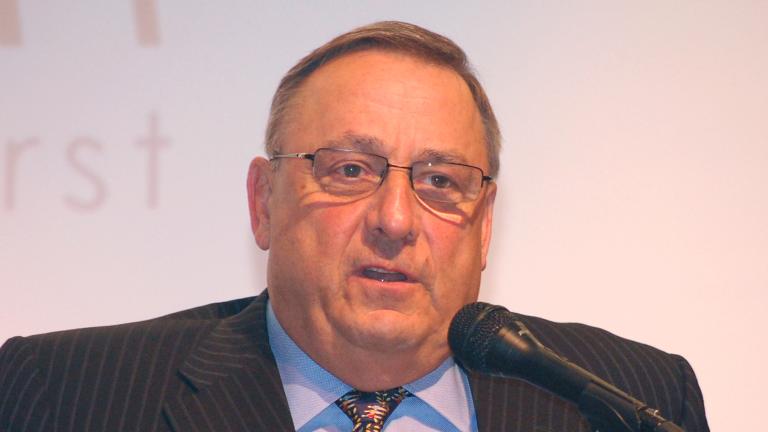A state of emergency has been declared in West Virginia following a spill into the Elk River of a chemical used to treat coal before it’s burned, called “4-methylcyclohexane methanol” — some details from ThinkProgress:
Residents of nine counties in West Virginia have been told not to use or drink their water after a chemical used by the coal industry spilled into the Elk River on Thursday. Gov. Earl Ray Tomblin declared a state of emergency as more than 100,000 customers, or 300,000 people, are without safe drinking water.
“Don’t make baby formula,” said West Virginia American Water Company president Jeff McIntyre. “Don’t brush your teeth. Don’t shower. Toilet flushing only.”
The chemical, 4-Methylcyclohexane Methanol (MCHM), is used to wash coal of impurities and spilled from a tank at Freedom Industries into the river. While the amount of MCHM that spilled wasn’t immediately known, West Virginia American Water has been conducting water quality testing every hour. According to Laura Jordan, a spokesperson with the water company, they believe the chemical is leaking at ground level and “there is a possibility this leak has been going on for sometime before it was discovered Thursday,” WSAZ reported.
Mary Anne Hitt, a resident of West Virginia and the director of the Sierra Club’s Beyond Coal Campaign said, “Our thoughts are with the more than 300,000 people in eastern West Virginia affected by this toxic chemical spill, upstream from the largest drinking water source in West Virginia. Coal mining communities are faced with the dangers of water pollution from coal mining and pollution every day. This spill pulls the curtain back on the coal industry’s widespread and risky use of dangerous chemicals, and is an important reminder that coal-related pollution poses a serious danger to nearby communities. Americans, and the people of West Virginia, deserve greater accountability and transparency about coal industry practices.”
As West Virginia Public Broadcasting points out for those impacted by this spill, more information is needed to assess what the impacts might be for “exposure at the levels being experienced in the air and water.” The patent page for the process in which 4-methylcyclohexane methanol is used has some background information:
In the coal industry, various types of shale and clay are produced as a mixture with the coal. To increase the heating value of the coal and to reduce the hauling costs, a complex process of coal washing is normally used to reduce the total ash content. In this process the coal is graded to a certain size, usually less than six inches, and then fed into a slurry bath in which the density of the media is closely controlled. The coal floats in the heavy media bath while the heavier rocks sink to the bottom.
Here’s how the coal industry’s PR machine sought to characterize this process, from a 1979 ad in the Wall Street Journal: “Raw coal is crushed, exposing more of its natural inner impurities. The crushed coal is passed through a bath of heavy liquid. The lighter “cleaned” coal floats to the top and the heavier impurities sink to the bottom.”
Note that this ad is referring to the same coal scrubbing process in which 4-methylcyclohexane methanol is used, but that particular chemical wasn’t created until later, replacing other chemicals that may have been even more toxic (more detail about that in the patent page link above).
“Clean coal” is a PR phrase that the coal industry has used for decades, going back at least as far as this 1921 ad in the New York Times. In reality, coal can never be clean, it poisons our air and water at every stage, from extraction to transportation, processing to burning. Toxic chemicals like 4-methylcyclohexane methanol are used to scrub some impurities from coal, which then contributes to the risk of disasters like the one in West Virginia. When scrubbers are installed to remove some forms of pollution from smokestack emissions, we’re left with enormous quantities of coal ash and toxins that leach into drinking water. Efforts to capture and sequester the carbon pollution from coal plants deep underground (if it ever becomes cost effective) will create new pollution problems, like somehow ensuring that the injected CO2 could never leak. And from West Virginia to Wyoming, all these efforts to “clean” coal fail to address the impacts of mountain top removal and strip mining.
The only clean coal is coal left in the ground, where it poses no threat to our air, water, and climate.




